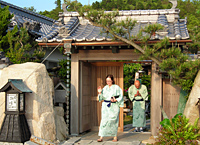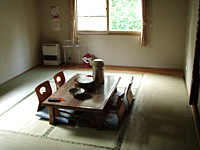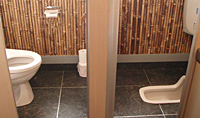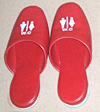| About
Japan |
||||
As the Japanese archipelago extends for 3000km/1864mile from north to south, the climate differs significantly depending on where in Japan you are. Hokkaido, the northern island of Japan, has a short cooler summer and a long cold winter with high snowfalls, whereas Okinawa, the southern islands of Japan, are known for the subtropical climate. The entire Japan, apart from Hokkaido, experiences a rainy season, generally starting from the mid-June for about four weeks. The hottest month is August, and a series of typhoons start around September. October is a pretty time to visit most of Japan as trees change the colour. The Hokkaido ski fields open in November, but it is still a good month for cycling in the Kyushu and Okinawa islands. December, January and February are our winter getaway months, so you may find our guides cycling in the southern hemisphere or working on the snow! Spring is from March to May and April is a beautiful month to visit if you would like to cycle under the cherry blossom trees in full bloom.

Japan caters for a wide range of experiences and budgets. Ryokan is probably the most expensive, and refers to traditional Japanese style inns that have their own onsen (natural hot springs) on site. You will sleep on a futon on the tatami floor in ryokan. It’s definitely the best choice if you want to experience authentic Japanese accommodation. Minshuku, less expensive, refers to Japanese guesthouses. They are often run as small family businesses, giving the feeling of staying in somebody’s home. Guests usually share communal facilities and some minshuku also have their own onsen. Youth Hostels are found throughout Japan, where YHA membership is accepted. Western style hotels are found in cities, generally in convenient locations near shops, airports and train stations. A newer type of accommodation that has emerged recently, is called the “cycling terminal”. They are found in scenic areas, ideal for cycling, with rental bikes available. Cycling terminals are growing in number and we believe it as a result of the increasing number of cyclists, both Japanese and non-Japanese.


Onsen is something you cannot miss while travelling in Japan. They are natural hot springs that are found all over the country and are an integral part of our culture. Rotenburo refers to outdoor spas in which you can privately enjoy the openness and superb views. Mixed sex onsen are rare nowadays, and most onsen in Japan are single sex where you are asked to take off all of your clothes. There are a couple of “dos and don'ts” that need to be remembered. The water in tub is only for soaking in, not for washing. No soap bubbles, towels, or anything goes in the water - just yourself. If you have long hair please tie it up so it won't dip in the water. Onsen etiquette necessitates that you rinse or wash yourself before you go in the water so the water stays clean for other people. Whilst in the water make sure you walk slowly and avoid splashing on others. There is absolutely no free-style swimming! If you are unsure about anything just watch others modestly. But most importantly sit back and enjoy as it is supposed to be a relaxation time. Many of our fellow cyclists became onsen experts while they were here. Onsen within accommodation facilities are usually free for overnight guests. For day users, admission fees will be approx. 500 yen. There are hundreds of small public onsen that are maintained by local authorities and free of charge.

Japanese food is now very popular and enjoyed in many other countries. Japanese people love their food too, and for many domestic travellers often the food is the main motive to go somewhere. The food varies greatly within Japan because the climate differs from place to place, and each region has its own specialty. Also Japan's distinct seasons increase the variety of crops and fish that can be harvested in Japan. The common dishes you are likely to encounter are, noodle dishes (soba=buckwheat, udon, ramen), -don (something on rice), okonomiyaki (savoury pancake), onigiri (rice ball), just to name a few. Beer is the most popular alcoholic drink in Japan, with our own breweries Asahi, Kirin, Suntory and Sapporo supplying the large majority. Happoushu, law malt beer, has become more popular in recent years, because the tax is lower than standard beer. Sake, rice wine, is one of the most traditional alcoholic drinks in Japan, with an alcohol content ranging from 13 to 16%. There are many different kinds of sake, distinguished by the kind of rice used and brewing methods. It can be served either warm or chilled, depending on the season or personal preference.


Motorists drive on the left hand side of the road in Japan, so do cyclists. Japan is currently undergoing a transition to separate pedestrians and cyclists to prevent accidents between them. Cyclists are increasingly urged to stay off the footpaths, especially in major cities where new cycling lanes are being developed. Many footpaths still allow shared use between pedestrians and cyclists, and they are clearly indicated by the signage. Helmets are not compulsory but we strongly recommend you wear one on our cycling trips for the sake of your safety.
Although we try to avoid busy main roads as much as possible, in scenic locations some tunnels are unavoidable. Shoulders in tunnels can be narrow sometimes, and the noise can be quite annoying. Japanese people like their roads to be well maintained, which means you are likely to encounter some road works while touring. On the positive side, Japanese drivers are very polite and considerate, so please wave or give thumbs up to show your thanks.

Our popular summer holidays begin in around the third week of July and finish at the end of August. The middle week of August, so called Obon, and the New Year periods are the peak times for holiday makers as many Japanese travel home to be with their families. Roads tend to become very busy during this time, and you may also experience difficulty securing accommodation at reasonable rates.
Medical
& Insurance
We strongly recommend that you take out comprehensive travel insurance when you come to Japan for your cycling holiday. This is to ensure you are covered for any unexpected flight delays, lost luggage, accidents, and so on. Medical care in Japan can be very costly, if you are not a Japanese resident. To avoid any disappointment, please ensure you are covered and that you carry your insurance details with you as a proof of payment when receiving treatment at hospital.
Communications
Public phones are gradually disappearing but are still found at airports, bus and train stations, hotels and convenient stores. They are either green or grey, operated on 10 yen and 100 yen coins, and prepaid telephone cards. Telephone numbers starting with 0120 are receiver-paid calls.
The easiest way to make international calls is to buy a prepaid international phone card from kiosks at airports and convenience stores. If you wish to use your own mobile phone in Japan, make sure it’s a 3G phone and you set up global roaming before leaving the country. If you don’t have a 3G phone, you can rent one from the Tokyo/Osaka international airports.
Many rural towns, where we stay night on our cycling trips, have minimal internet facilities for travellers. This is due to the high usage of mobile internet by Japanese people, which hasn’t created a huge demand for internet cafes to this date. Some accommodations have a free wi-fi for overnight guests, so please ask your guide for assistance.
We strongly recommend that you take out comprehensive travel insurance when you come to Japan for your cycling holiday. This is to ensure you are covered for any unexpected flight delays, lost luggage, accidents, and so on. Medical care in Japan can be very costly, if you are not a Japanese resident. To avoid any disappointment, please ensure you are covered and that you carry your insurance details with you as a proof of payment when receiving treatment at hospital.
Communications
Public phones are gradually disappearing but are still found at airports, bus and train stations, hotels and convenient stores. They are either green or grey, operated on 10 yen and 100 yen coins, and prepaid telephone cards. Telephone numbers starting with 0120 are receiver-paid calls.
The easiest way to make international calls is to buy a prepaid international phone card from kiosks at airports and convenience stores. If you wish to use your own mobile phone in Japan, make sure it’s a 3G phone and you set up global roaming before leaving the country. If you don’t have a 3G phone, you can rent one from the Tokyo/Osaka international airports.
Many rural towns, where we stay night on our cycling trips, have minimal internet facilities for travellers. This is due to the high usage of mobile internet by Japanese people, which hasn’t created a huge demand for internet cafes to this date. Some accommodations have a free wi-fi for overnight guests, so please ask your guide for assistance.
There are two types of toilets in Japan. One is a normal western “sit-on” style, and the other is a traditional Japanese “squat” style. If you have problems with your knees, you may find the squat one difficult to use. The squat type is becoming less common in Japan, but there is a high chance of encountering one when you are travelling to small towns. Many of our sit-on toilets are known as “super toilets” as they have heated seats and bidet functions. If toilet slippers are provided, please change into them and leave them as you find them when you finish. Please remember the toilet slippers are only to be worn in toilets and not anywhere else.


Japan has developed a very efficient public transport infrastructure over the years, well known for its punctuality, excellent service and crowds! To get around in Japan, public transport is recommended over a rental car for many reasons. The roads in cities are quite busy and complicated at places so it’s difficult to navigate if you don’t understand written Japanese. The railway network is spread all over the country, and is also English user-friendly. Japan Railways offers a Railway Pass for international travellers, which can only be purchased outside of Japan. If you are planning to travel more than a week in Japan, the Railway Pass is of great value and convenience.
Language
Japanese is the only language widely spoken in Japan. While English is taught at schools as a compulsory subject, unfortunately many adults have forgotten their English, as they aren’t exposed to the language in everyday life. Therefore, when you communicate with people in Japan, you need to speak slowly and clearly, or even writing it down helps make yourself understood by non-English speakers. Here are some useful phrases;
Thank you = Arigato
Hello = Kon-nichiwa
Excuse me = Sumimasen
How much? = Ikura des ka?
It was delicious! = Oishi katta des.
| About Japan FAQ Contact us |
©2022
Cycling Japan |